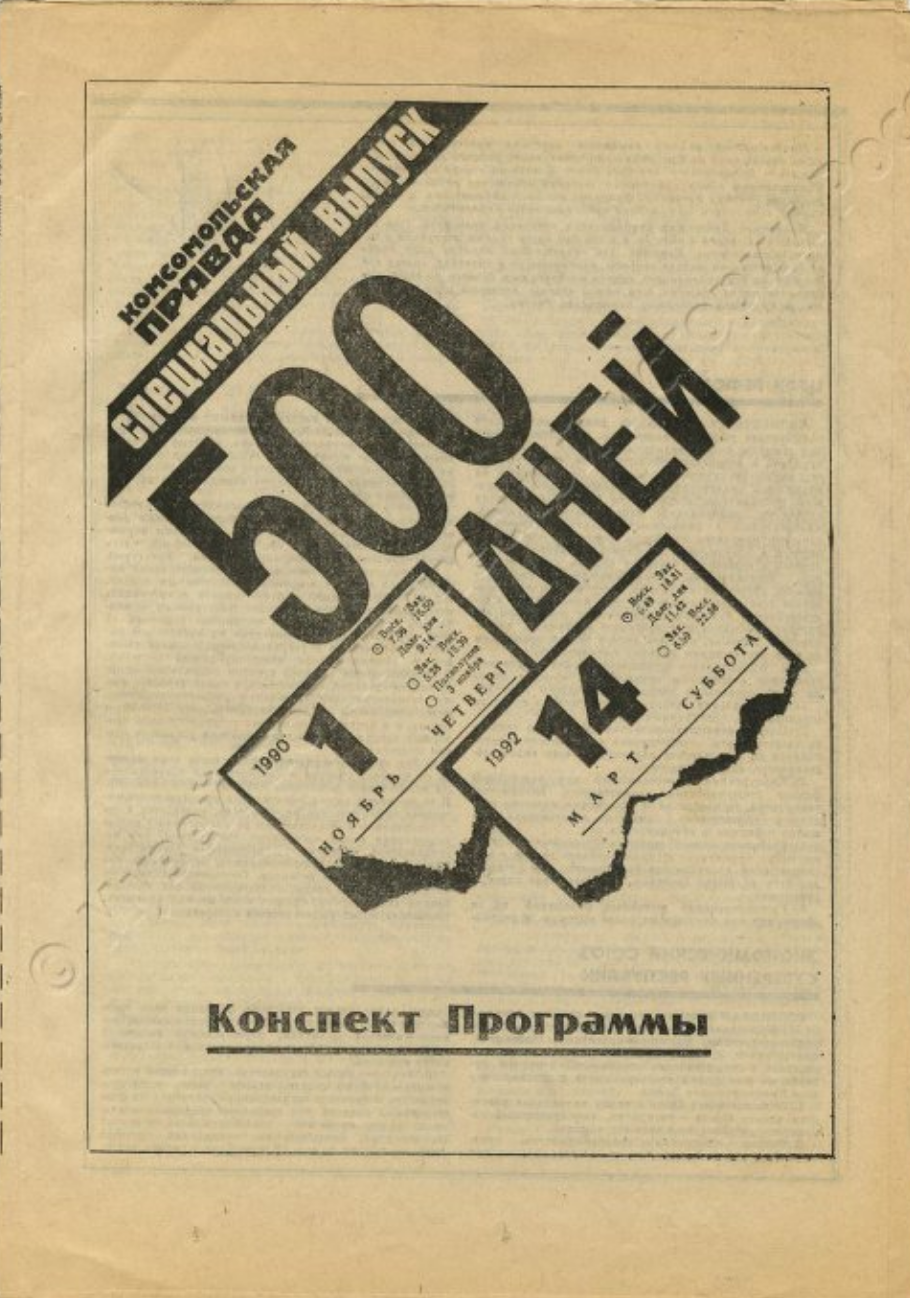Filed Under: Print > Journalism > “500 Days: Program Summary"
“500 Days: Program Summary"

Approximately a year after the USSR’s formal dissolution in December 1991, Yeltsin began taking steps to privatize the Russian economy. One measure was the infamous “shock therapy,” spearheaded by Deputy Prime Minister Yegor Gaidar and endorsed by the global neoliberal establishment, including the IMF, the World Bank, and the US Treasury Department. “Shock therapy” involved rapid “liberalization” (lifting of price controls), “stabilization” (economic austerity combined with high taxes and interest rates, meant to control inflation), and privatization (of previously state-owned property). The effects were immediate and disastrous: declining GDP, hyperinflation, escalating wealth inequality, unemployment, and homelessness. Soon, Alexander Rutskoy, Russia’s first and only Vice President (the role would be abolished during the 1993 Constitutional Crisis), denounced Yeltsin’s program as a form of “economic genocide.” Also opposed to the reforms was Ruslan Khasbulatov, Speaker of the Supreme Soviet and another future leader of the anti-Yeltsin faction in September-October 1993.
But before “shock therapy” and vouchers, there was “500 days”—the never-realized brainchild of academic economist Stanislav Shatalin and Gorbachev-era economic reformer (and future 1996 presidential hopeful) Grigory Yavlinsky. The program’s overarching goal was to transition Russia into a market economy over four phases lasting 500 days in total. Here, we see a special issue of Komsomolskaya Pravda— mouthpiece of the Komsomol (Communist Youth League) since 1925, now a daily tabloid—summarizing the program for public consumption. True to the dictates of glasnost, “500 Days” was avidly debated by a broad cross-section of the public and earned the support of both Yeltsin and Gorbachev—only to be jettisoned after vociferous opposition from the Chairman of the Council of Ministers, Nikolai Ryzhkov. Yet even though “500 Days” did not proceed as Shatalin, Yavlinsky, and their colleagues had planned, the Yeltsin administration would ultimately implement all of its central tenets: privatization of state assets; decentralization of economic administration; and the creation of favorable conditions for private enterprise.